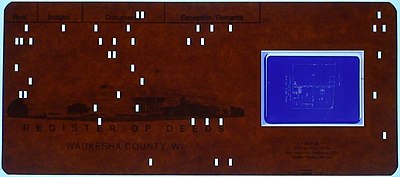In 1936, the National Archives and Records Administration
(NARA) made microfilm a regular supplemental material to its finding aids. By
1940, NARA began to use microform for preservation, especially of newspapers
and certain public access government documents. 1956 marked a mass effort to
preserve fragile deteriorating documents, a project which became known as the
Microfilm Preservation Project. In 1977, the television miniseries “Roots”
inspired a national interest in genealogy and therefore microfilm as a research
media. In the late 1990s, NARA launched the Electronic Access Project in
response to users’ expectations for online access to research materials. Today,
NARA has over 4,000 microfilm publications. The Microfilm Reading Room in
Washington, D.C. remains a hot spot for genealogy researcher (Niekrasz et al.
n.d.).
The Brittle Books
phenomenon of the 1980s made preservation by microfilm significant to more than
just newspapers. These books were characterized by brittle pages and bindings—a
direct product of the acidity of the paper effecting the integrity of the text
block and its binding. The Association of Research Libraries and a host of
other national institutions addressed the issue in the 1980s allowed for the
publishing of a national standard for permanent paper (Fox 1996: 26-28).
Image taken from http://libguides.wustl.edu/c.php?g=47421&p=303799
Kenney and Chapman (1996) intimated in the late 1990s that a
hybrid approach to preservation would be the best option (179). This would
include microfilm masters as backfiles to accompany digital imagery. While at
the time of this writing the technology to support digitization efforts was not
as advanced as it is now, Cornell’s Preservation and Conservation crew
identified many of the same drawbacks then as effect digitization crews
presently such as enduring access (187).
Alongside the articles discussed in the posting entitled “Advantages
and Disadvantages of Using Microforms,” Fox (1996) discusses extensively the
topic of preservation microfilming with a focus on standards approved by the
Association of Research Libraries.
Bibliography:
Fox, L.L., ed. (1996). Preservation
microfilming: A guide for librarians and archivists. Chicago: American
Library Association.
Kenney, A.R. and Chapman, S. (1996). Digital imaging for libraries and archives. New York: Department of
Preservation and Conservation, Cornell University Library.
Niekrasz, E. et al. (n.d.) The National Archives: A pioneer in microfilm. Google Arts and Culture. Retrieved from https://www.google.com/culturalinstitute/beta/exhibit/QQXzWF8K.
Niekrasz, E. et al. (n.d.) The National Archives: A pioneer in microfilm. Google Arts and Culture. Retrieved from https://www.google.com/culturalinstitute/beta/exhibit/QQXzWF8K.











